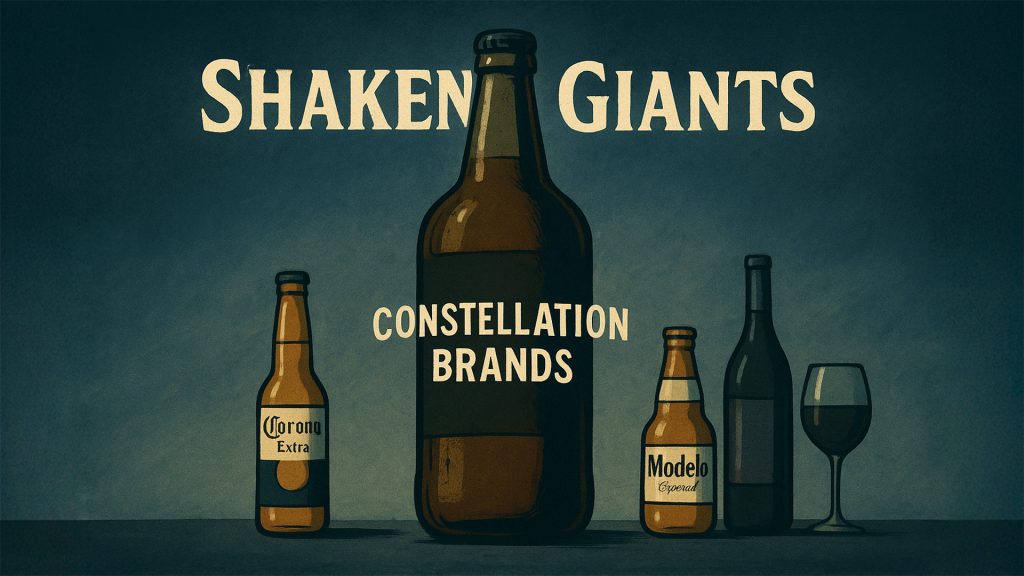In the vibrant world of global spirits, where an Aperol Spritz can spark a summer evening or an Espolòn shot fuels a late-night toast, Campari Group stands as a titan of taste and tradition. Yet, its latest financial snapshot for the first half of 2025 reveals a story as complex as its iconic bitters—bittersweet, bold, and brimming with strategic maneuvering. Amid new U.S. tariffs, a weakening dollar, and a volatile market, Campari has posted a 2.9% rise in second-quarter operating profits, surpassing expectations with €352 million in adjusted earnings. But beyond the numbers lies a narrative of resilience, reinvention, and a calculated bet on core brands to weather an uncertain storm.
The headlines might focus on the 15% U.S. tariffs on European spirits, which kicked in this August and threaten to shave up to €45 million off Campari’s 2025 earnings. Add to that a dollar that’s lost 10% against the euro, inflating shelf prices in a market that accounts for 44% of the group’s sales. Yet, Campari’s response is neither panic nor retreat. CFO Paolo Marchesini has ruled out significant price hikes, citing fragile consumer confidence, and dismissed shifting production to the U.S. as impractical in this foggy economic climate. Instead, Campari is doubling down on its strengths, letting its star players—Aperol, Campari, and Espolòn—carry the torch.
These brands are shining. Second-quarter organic net sales climbed 3.5%, driven by a 4% rebound in the Americas, where Espolòn tequila and aperitifs like Aperol Spritz are outpacing the broader spirits market. The orange-hued Spritz, a global symbol of carefree socializing, continues to captivate, while Espolòn’s Blanco and Reposado expressions are riding the tequila wave, growing 5% and 14% respectively. Even in seeding markets like Australia and Canada, Espolòn is planting roots, signaling Campari’s ambition to make its agave star a global contender. In Europe, which makes up half of group sales, growth was steadier at 1%, with Italy’s resilient demand for Crodino and Aperol Spritz balancing Germany’s softer performance against a tough prior-year comparison.
But Campari’s story isn’t just about holding ground—it’s about reshaping it. The group has taken a scalpel to its sprawling portfolio, offloading Cinzano vermouth and Frattina grappa for €100 million. This move, expected to yield an €88 million pre-tax gain by year-end, marks a decisive shift. After years of acquisitions, new CEO Simon Hunt is steering Campari toward a leaner future, focusing on high-margin, high-growth brands that define its identity. “We’re not in a hurry,” Hunt told Reuters, but ongoing talks with potential buyers for other non-core brands suggest more streamlining is on the horizon. This isn’t just pruning—it’s a strategic pivot to sharpen Campari’s edge in a crowded market.
Subscribe to our newsletter
Challenges persist. The U.S. market, while rebounding, saw SKYY vodka and Grand Marnier struggle, with the latter down 20% due to destocking and fierce competition. Jamaica and other Americas markets also faced headwinds, declining 2% and 5% respectively. Meanwhile, the tariff saga hangs like a dark cloud, with EU-White House talks unlikely to resolve until after the holiday season. Campari estimates the tariff hit could range from a manageable €4 million, if exemptions materialize, to a hefty €50 million annualized impact if they don’t. Yet, the group remains unfazed, maintaining its 2025 guidance of moderate sales growth and stable margins, excluding tariff effects.
What makes Campari’s approach compelling is its refusal to play the short game. Rather than slashing costs or chasing quick wins, it’s investing heavily in brand-building—€254 million in advertising and promotion, up 9.7%—to fuel the peak summer season. This front-loaded spending diluted margins slightly, but gross profit still rose 2.6%, buoyed by premium brands like Courvoisier, recently integrated into organic growth. The balance sheet reflects this discipline: net debt held steady at €3.2 billion, with a net debt-to-EBITDA ratio of 3.2 times, even after €78 million in dividends and a €22 million share buyback.
As Hunt prepares to unveil his strategic vision in November, the third quarter looms as a critical test. Will the peak season sustain the momentum of aperitifs and tequila? Can Campari navigate tariffs without alienating price-sensitive consumers? And will its portfolio slimming inspire rivals to rethink their own sprawling brand rosters? For now, Campari’s story is one of calculated resilience—a group toasting to its core strengths while bracing for turbulence. In a world where every sip tells a story, Campari’s blend of grit and glamour keeps it firmly in the glass.



